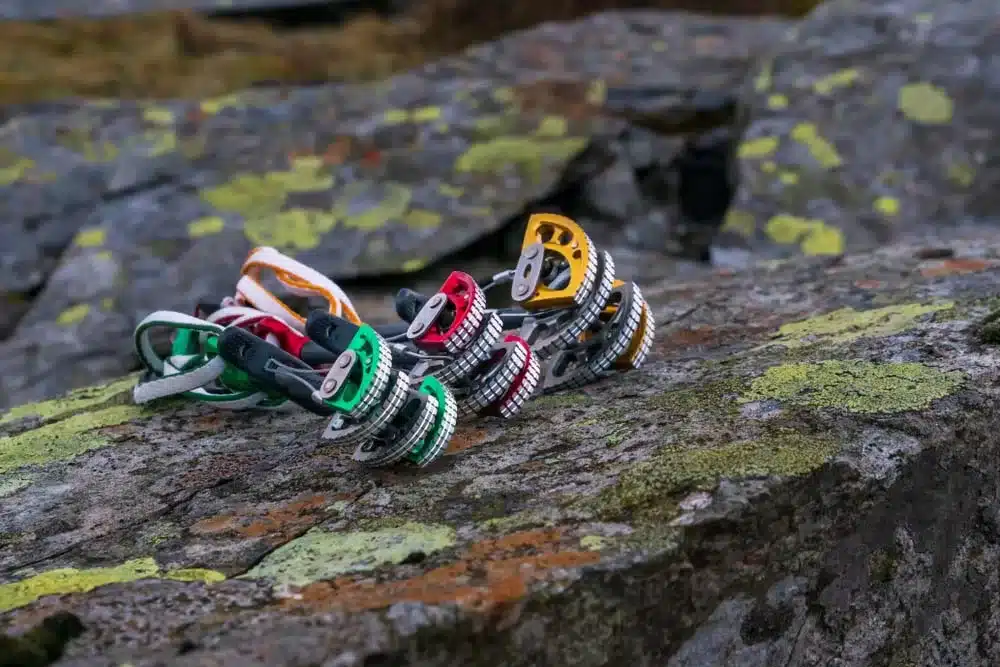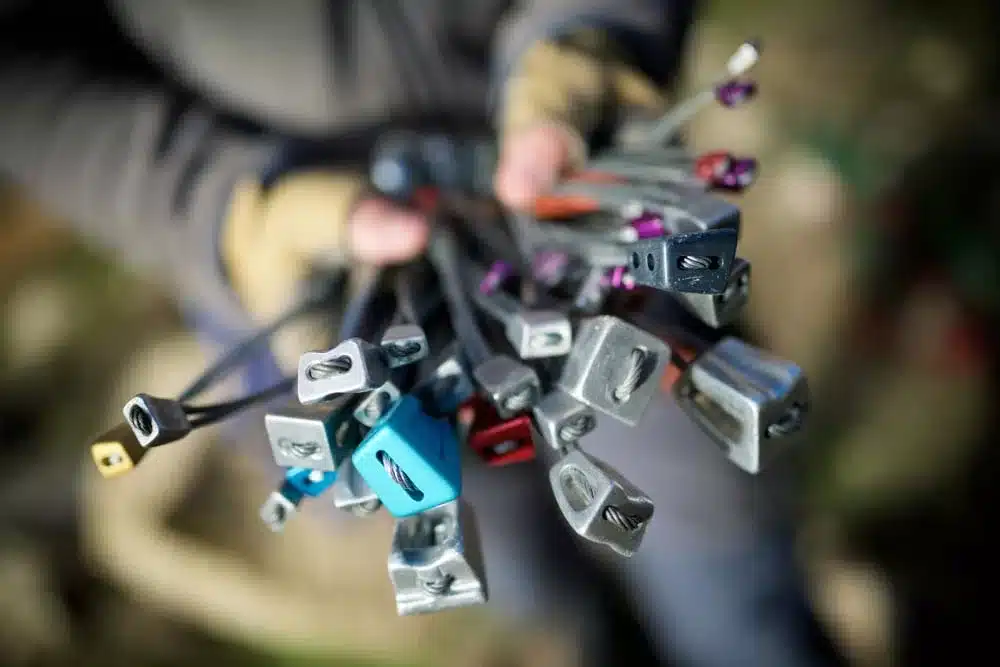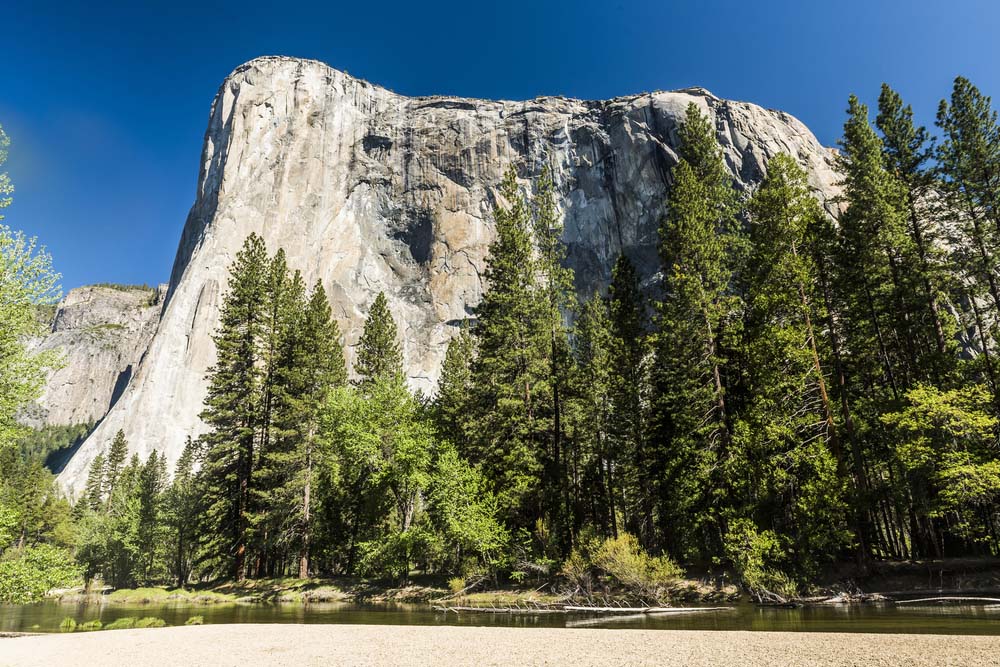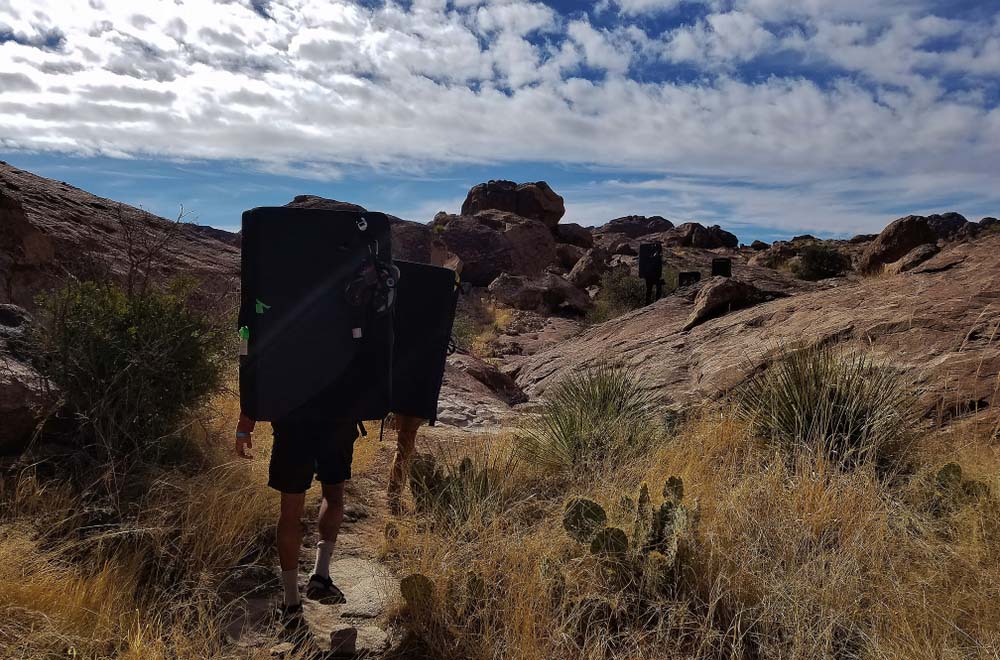The sport of rock climbing never ceases to interest me. When I think I’ve reached the pinnacle of fun facts about rock climbing, someone drops a new one I’ve never heard before.
So, to help you beef up on rock climbing-related fun facts and trivia to impress your friends the next time you’re at the crag, I’ve compiled a list of my favorites. I’ve learned these over the years, and let it be across sport climbing, traditional climbing, aid climbing, or even indoor rock climbing gyms, these facts never cease to amaze me!
ATC Stands for “Air Traffic Controller”
The ATC is synonymous with every tube-style belay device on the market. It is used throughout the climbing world for lead climbing, sport climbing or pretty much any other discipline and no matter who makes the device, most rock climbers still call it an ATC.
However, technically speaking, only Black Diamond’s groundbreaking tube-style belay device from the 1990s is the real ATC.
Even lesser known is the meaning behind the abbreviation ATC, which stands for air traffic controller. According to Black Diamond lore, the belayer is the air traffic controller in charge of climbers’ safe landing when they whip.
Cams Were Originally Called “Friends”
Prominent Northern American and local rock climbing legend of Yosemite, Ray Jardine, has largely been credited with inventing spring-loaded camming devices or cams back in the 1970s.
However, to keep his inventions a secret while experimenting with prototypes for outdoor climbing, Jardine and his rock climbing partners called them “friends.”
Later, in the 1980s, a British rock climbing company, Wild Country, began manufacturing cams officially as Friends, which is what they are still called today.
The Stovelegs on El Capitan are Named After Actual Stove Legs
Of all the facts about rock climbing that you might not know this one has to be towards the top.
Pitched eight, nine, 10, and 11 of The Nose on El Cap are hand and fist-sized cracks. Due to their wider size, they were originally aid-climbed by using pitons crafted from the legs of wood-burning stoves. But now, thanks to modern-sized cams, these pitches can do via free climbing.
Nuts Were the Original Trad Protection
In the 1920s, British rock climbers carried rocks in their pockets and slotted them into cracks, tying them off with hemp cord for protection when traditional climbing.
Eventually, in the 1950s, they discovered that steel machine nuts they found scattered along train tracks worked better as protection than chockstones and they became part of their regular climbing gear. The shape allowed for more reliable placements, and the hole in the center was easy to sling.
Old Fashioned Climbing Holds Replicated Features from Real
Rock
Metolius was the first to bring artificial climbing holds to the United States. They used to shape holds for an artificial climbing wall using clay, let the clay harden, and then paint the whole thing in resin.
Eventually, polyester resin replaced clay, and then polyurethane replaced that. Now, some modern climbing holds used in indoor climbing gyms are made with fiberglass and look nothing like natural rock features found outside.
Lynn Hill Was the First Person to Climb 5.14 on El Cap
In 1993, free climbing legend Lynn Hill free climbed every move on The Nose of El Capitan during a four-day ascent with her partner Brooke Sandahl. Her groundbreaking ascent made Hill the first woman to free climb The Nose.
A year later, Hill climbed the nose in under 24 hours, creating what is now a classic challenge for the Valley– Nose in a day, or NIAD.
At the time, she graded the “Free Nose” variation at 5.13b. However, years later, and after more free ascents, the consensus was that the Free Nose Variation should be upgraded to 5.14. Consequently, Lynn Hill became not only the first woman to free climb The Nose but also the first person to climb 5.14 on El Cap.
John Gill Popularized the Usage of Magnesium-Carbonate for Climbing
John Gill was one of the forefathers of bouldering in the United States. Gill’s climbing, most notably his bouldering, was inspired by gymnastics. More specifically, Gill was curious about how to apply gymnastic movements to establish new cutting-edge boulder problems that required dynamic and acrobatic beta.
Throughout his climbing career, Gill was largely credited with popularizing the usage of magnesium carbonate, or gymnastic chalk, while climbing.
The Current Speed Record on The Nose is Sub-Two Hours
In the 1990s and early 2000s speed-climbing The Nose on El Cap became the new sought-after challenge. For many years, a climber named Hans Florine was at the forefront of speed-climbing on El Cap.
Over the years, Florine held eight different speed records. Because of his speed-climbing pursuits, Florine holds the record for the most ascents of the Nose at around 111 ascents.
<Nowadays, the speed record for The Nose is 1:58:07, held by none other than Tommy Caldwell and Alex Honnold, established in 2018.
The V-Scale Comes From John Sherman
One of the most prominent grading systems for bouldering in the United States is the V-Scale. The V-scale was devised by John Sherman, also known as “Verm” which was short for “Vermin.”
John Vermin Sherman was an iconic figure in North American bouldering during the 1980s and 1990s. In his heyday, Verm put up over 400 first ascents in Texas’ classic Hueco Tanks State Park.
The Excrement at Everest Base Camp has to be Carried Down
An often overlooked fact if you want to climb Mount Everest is what is done with the human waste at base camp. You’d be surprised to know that porters often take the unenviable task of carrying all this back down.
This underscores the often-overlooked aspect of Mount Everest climbing – the significant volume of human waste generated by the annual influx of climbers. Their commendable efforts are vital in preserving the cleanliness of this iconic wonder of the world.
Pierre Allain Invented the Climbing Shoe
Pierre Allaine was a French alpinist and a first ascensionist of bouldering in Fontainebleau. Allain used the boulder fields of Fontainebleau as training tools for his larger ascents in the Alps.
To assist his bouldering efforts on the sandstone of Fontainebleau, Allain devised a first rock climbing shoe with soft rubber on the sole. Allain’s first rock climbing shoes, known only as “PAs,” catalyzed the possibilities of bouldering at the time and inspired the modern climbing shoes we still use today.
The Original Name for El Cap is Tu-Tok-A-Nu’-La, which means “measuring- worm.”
To finish, perhaps one of the lesser known fun facts about rock climbing. The Miwok People first inhabited the Yosemite Valley and surrounding areas. Their name for the granite mountain known as El Capitan in Yosemite National Park is Tu-Tok-A-Nu’-La, which means “measuring-worm.”
The name comes from a Miwok legend about an inchworm who climbs El Cap to save two bear cubs who had been separated from their mother.
Much later, a Spanish battalion named the formation El Capitan, and the name stuck.






















